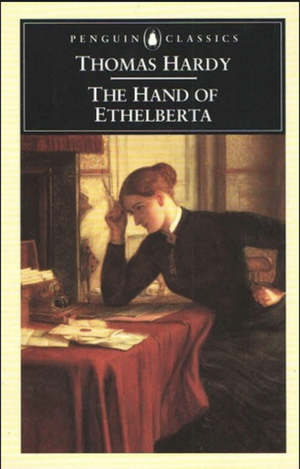The Hand of Ethelberta
Fiche technique
Résumé : Following the success of Far from the Madding Crowd Hardy was invited to provide another serial for the Cornhill Magazine. Unwilling to be typecast as a writer of pastoral fiction he submitted, in his own words, ‘the beginning of a tale called The Hand of Ethelberta – A Comedy in Chapters which had nothing whatever in common with anything he had written before’. The serialisation began in July, 1875, and the novel was published in two-volume form in April, 1876. It was an audacious work in several ways. Ethelberta Petherwin, the heroine, is the dominant figure in the narrative: beautiful, enterprising and outspoken, she becomes a social celebrity through her poetry and her performances as an oral story-teller. Her several wealthy admirers do not guess that her father is a butler and that various of her siblings are servants and labourers. She resourcefully assumes responsibility for the entire family, at one point in effect employing a number of them as domestic staff in her London home. The plot of the novel, as so often in Hardy, is eventually shaped by the heroine’s need to choose between competing suitors. The central situation provides occasion for a good deal of subversive social comment, culminating in the irony of Ethelberta’s lower-class family desperately trying to prevent what they regard as her unsuitable marriage to a lord. Yet the novel is hardly situated in the real world. As Hardy himself later acknowledged in a Preface: ‘A high degree of probability was not attempted in the arrangement of the incidents, and there was expected of the reader a certain lightness of mood,..’. In fact the story is fantastical, and the narrative mode recurrently harks back to the stylised stage comedies of Congreve or Sheridan. Some of the characters actually have names derived from the theatre of manners – Menlove, Ladywell, Tipman, Neigh. Many a conversation is shaped into a exchange of epigrams. Hardy’s mixed medium is only intermittently successful: there is undoubtedly a tension between the sardonic social commentary and the brittle contrivances of the story-telling and some portions of the dialogue. Later, however, in such plays as Pygmalion and Mrs Warren’s Profession, Bernard Shaw was to produce striking social parables in very much this artificial vein. Hardy, perhaps not unreasonably, came to think that The Hand of Ethelberta ‘appeared thirty-five years too soon’.

